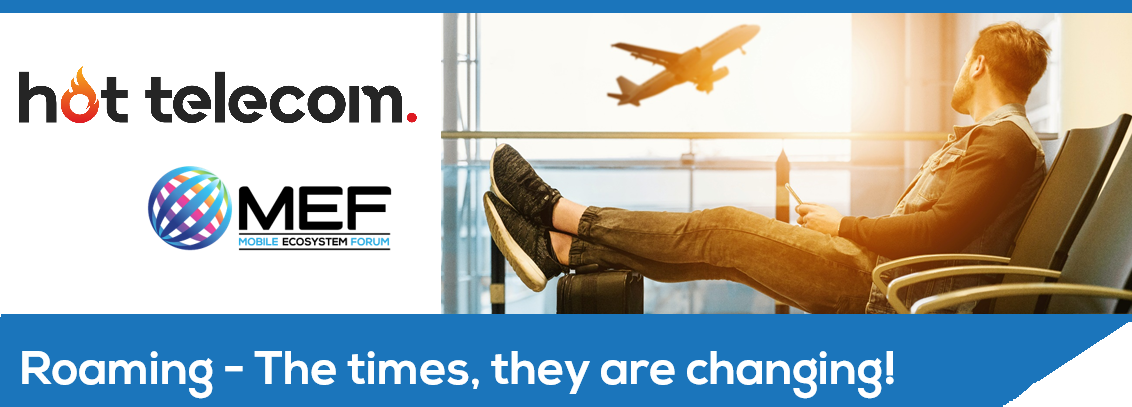Earlier this week, a new report from Hot Telecom and MEF was launched focusing on the current state of roaming post pandemic, and looking at the future trends, challenges and opportunities for the sector. Here, Hot Telecom CTO and co-author of the report Steve Heap, shares his take on the state of roaming and explains what you can find in the free report, available to download now.
Roamin’ in the gloamin’. There are not many technology articles that start with the title of a famous 1911 love song by Sir Harry Lauder. But is the roaming business really in its twilight years? Yes, the pandemic has given the service a mighty blow from which it is taking several years to recover, but will the widespread availability of alternative communications over the internet really push mobile roaming into its dotage?

In this latest report from Hot Telecom and the MEF, we look at the current status of roaming and examine the trends that will drive its future. After many years of a relatively peaceful middle age, where little seemed to change from year to year, there are some major changes on the horizon that all operators and their international carriers need to be aware of and making serious plans to address.
In this latest report, you will find the background to these changes and a deeper analysis of exactly what is likely to change and when. Written following deep interviews with experts from 10 operators around the world, this report will answer the questions in your mind about the future of roaming in today’s world.“
Even though the technology underpinning mobile services has been evolving over the years from 2G to the pretty major changes introduced by 4G and the LTE architecture, the structure of roaming has changed little. The business model is still one of negotiating in advance at a pretty granular level for the different services that someone could use while roaming – paying per event in most cases. The technology model has largely ignored the potential impacts of VoLTE roaming, preferring instead to have the handset fall back to the 3G network and make a traditional circuit switched voice call via the visited network. Finally, data roaming, although it has been growing rapidly, is still implemented by piping the data stream back over international networks to the home network before being routed into the public internet.
The pandemic did deliver a mighty blow to roaming with the initial lockdowns and travel bans. Both business and leisure travel plummeted and with that, the majority of roaming volumes similarly disappeared. What was left surprised some operators as both permanent roamers and IOT devices continued to generate demands. The recovery has been slow, with many countries not even reaching the levels of 2019 although our interviewees, in some cases, reported that data volumes in particular were higher than they have ever been.
But what is around the bend? Some pretty massive changes, we believe. Two major strands are driving changes to the business model, the technology model and even the ability of our international partners to provide the sort of value-add services they have traditionally offered for roamers.
Major networks around the world are actively closing the 2G/3G networks to re-farm the spectrum for 5G growth. And 5G itself is rapidly being deployed, promising super-high download speeds and low latency. What both of these trends have in common is that 5G does not permit a voice call to fall back to any non-IP network and with no 3G in place in some areas, the LTE fallback will no longer be possible.
And 5G promises of low latency will be meaningless of those streams are routed around the world to the home network with the result that operators around the globe need to tackle the twin challenges of VoLTE roaming and local breakout of at least some streams of data traffic and to do that before the customers notice the loss of certain services. With a purely IP based roaming environment, it then begs the question of why the business model is so attached to per-event pricing with the likelihood of that being finally put to rest.
In this latest report, you will find the background to these changes and a deeper analysis of exactly what is likely to change and when. Written following deep interviews with experts from 10 operators around the world, this report will answer the questions in your mind about the future of roaming in today’s world.
Roaming – The Times they are changing!
Developed in cooperation with HOT TELECOM, this report reflects the view of roaming experts around the world, giving you an insight on what the future has in store when it comes to the roaming business model, the technology, the impact of 5G and all the complexity it will bring. The times, they are changing!
Free Download >






